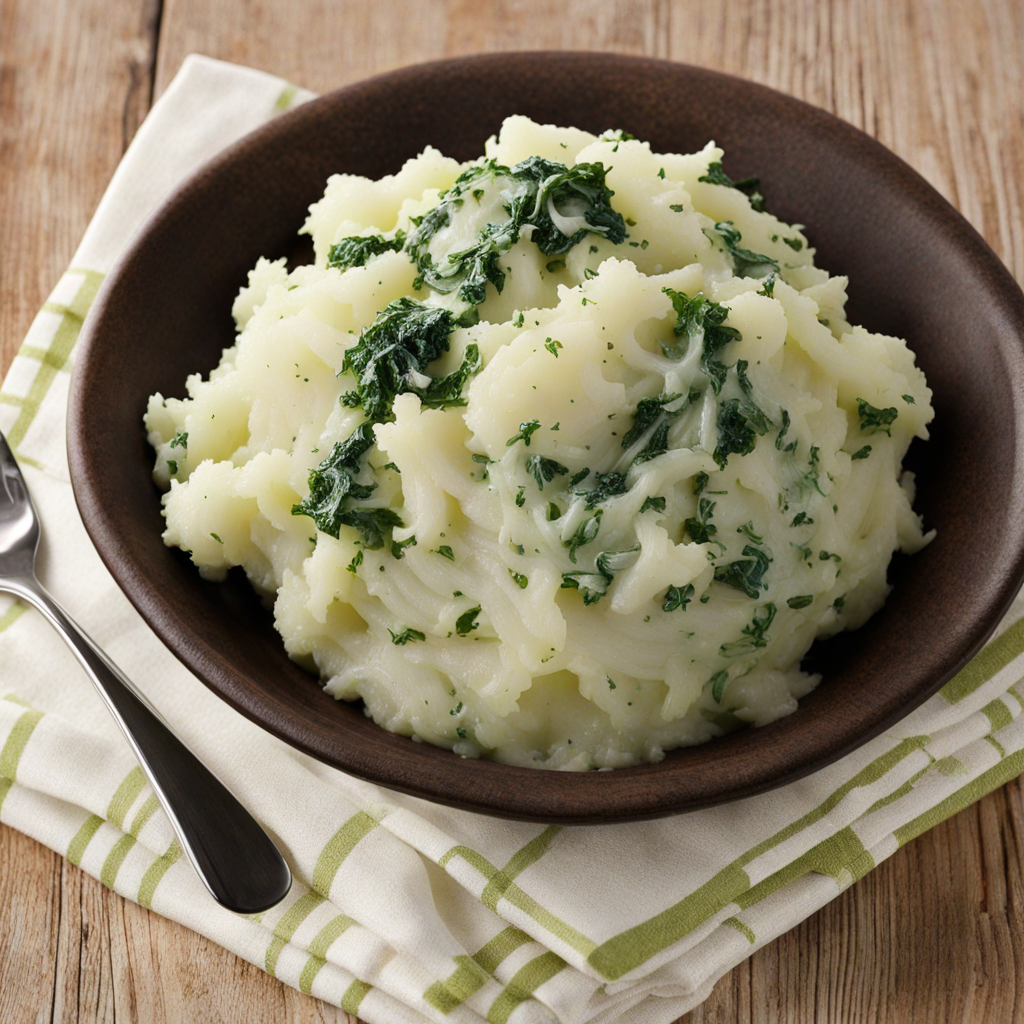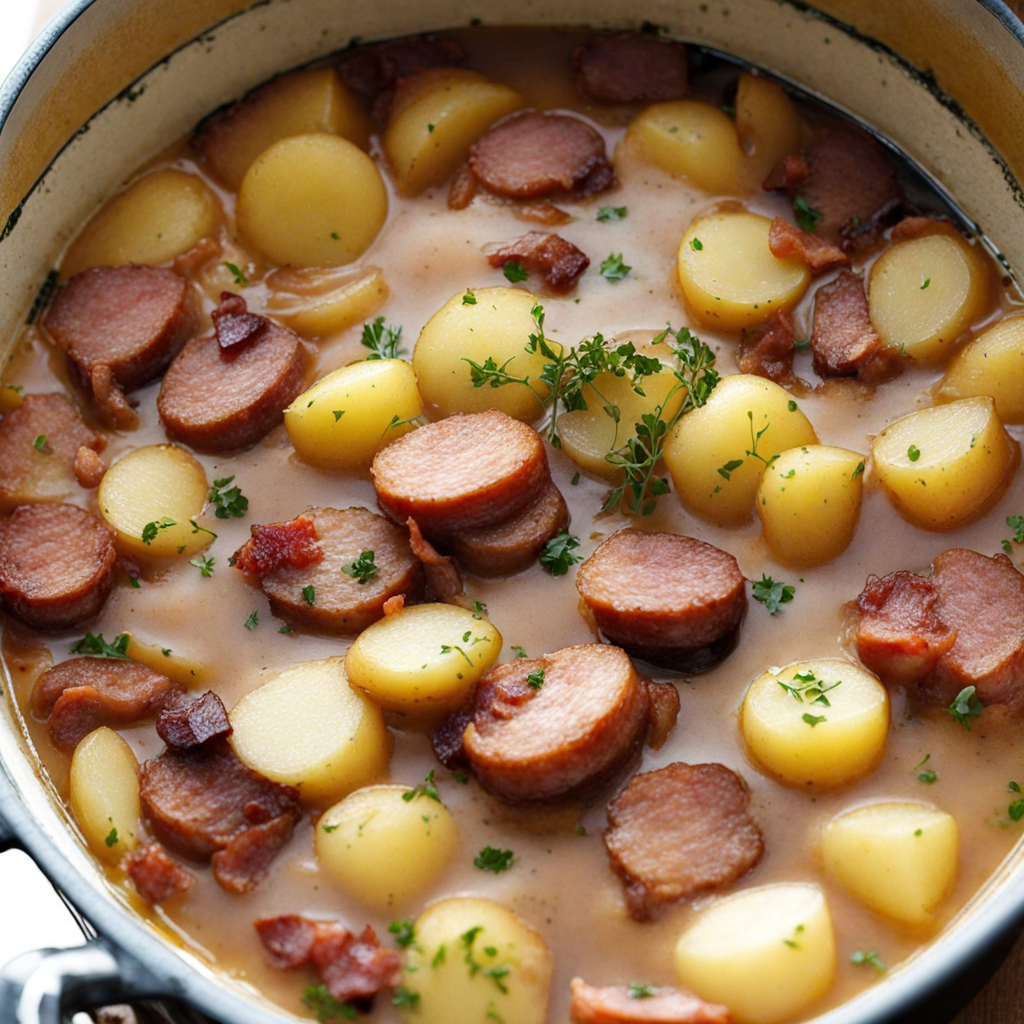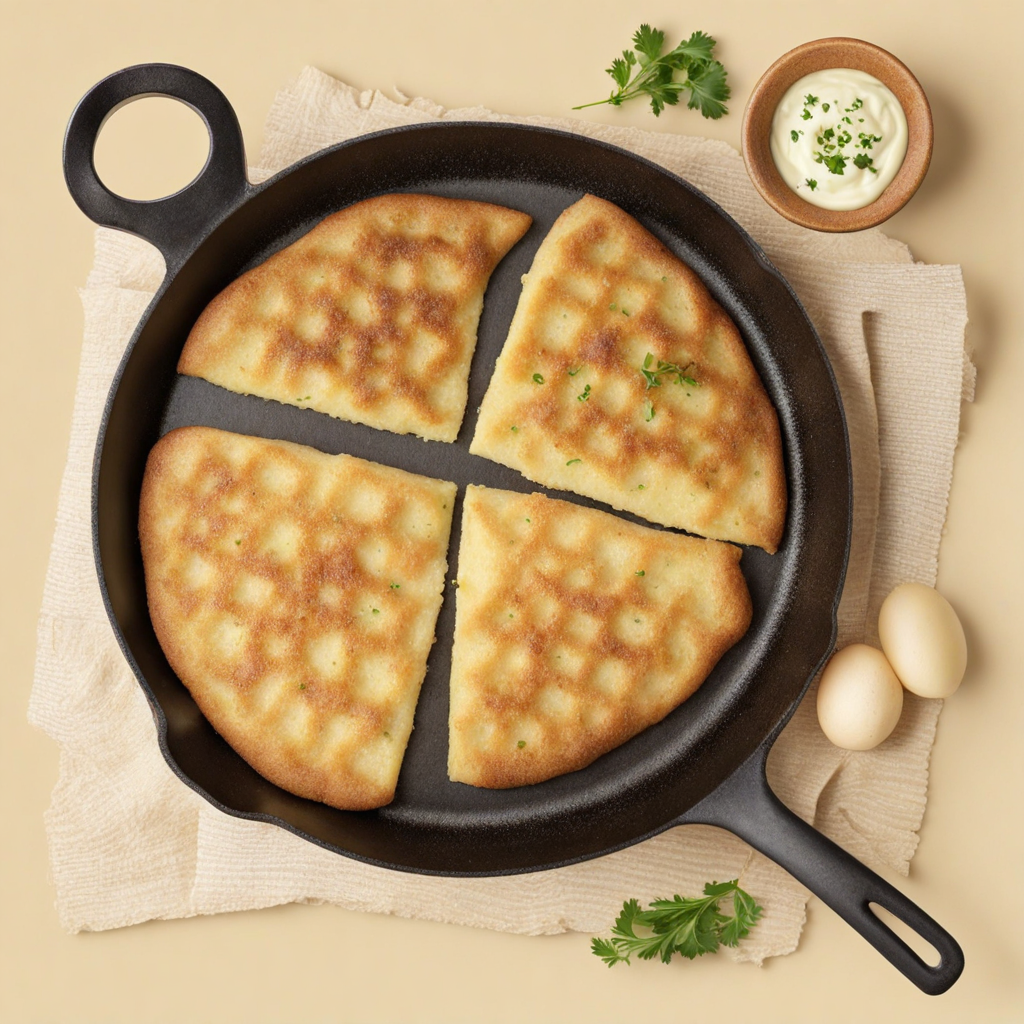Colcannon
Colcannon is a traditional Irish dish that beautifully marries the earthy flavors of potatoes with the vibrant essence of seasonal greens. At its core, colcannon consists of creamy mashed potatoes, which serve as a comforting base. The green component typically comes from finely chopped kale or cabbage, which adds a delightful texture and a hint of bitterness that perfectly balances the starchiness of the potatoes. The dish is often enriched with butter, which melts into the warm mash, creating a luscious, velvety experience that is hard to resist. What makes colcannon truly special is its ability to embody the essence of Irish cooking—simple yet incredibly satisfying. The ingredients are usually locally sourced, making it a dish that celebrates the agricultural bounty of Ireland. On top of its hearty components, colcannon is sometimes seasoned with scallions (spring onions) that lend a mild onion flavor, enhancing the overall taste profile. A touch of milk or cream is often added to achieve the desired level of creaminess, resulting in a dish that is both indulgent and comforting. Colcannon is not just a side dish; it's often served as a main dish during festive occasions like Halloween, where it might be accompanied by a hidden trinket or coin, adding an element of fun and surprise. Traditionally, it can be enjoyed with a drizzle of gravy or simply on its own, allowing the rich flavors to shine. Whether you're savoring it on a chilly evening or at a celebratory gathering, colcannon offers a unique taste of Ireland that encapsulates warmth, nostalgia, and the joy of sharing good food with loved ones.
How It Became This Dish
Origin of Cál Ceannann Cál ceannann, often referred to as "cabbage head" in English, is a traditional Irish dish that has its roots deeply embedded in the agricultural practices and culinary traditions of Ireland. The dish primarily features cabbage, which has been cultivated in Ireland since ancient times. The Celtic tribes recognized cabbage as a vital crop, due not only to its hardiness but also its nutritional value. This leafy green vegetable became a staple in the Irish diet, particularly among the rural population, who relied on it as a primary source of sustenance during harsh winters. The name "cál ceannann" itself reflects the Gaelic language, showcasing the connection between the food and its cultural identity. The term "cál" refers to cabbage, while "ceannann" translates to head, indicating the central part of the vegetable used in the dish. This simplicity in naming is emblematic of the straightforward, hearty nature of traditional Irish cooking, which often emphasizes the innate flavors of locally sourced ingredients. \n\n Cultural Significance Cál ceannann holds a special place in Irish culture, particularly among the rural communities of the country. It is emblematic of the agrarian lifestyle that has shaped Ireland's history for centuries. The dish symbolizes resilience and resourcefulness, as it was often prepared during times of scarcity. Cabbage is a resilient vegetable, capable of growing in less-than-ideal conditions, making it a reliable crop for Irish farmers. Moreover, Cál ceannann is often associated with the autumn harvest, a time when communities would gather to celebrate the bounty of their land. Festivals dedicated to the harvest season frequently featured this dish as a centerpiece, highlighting its significance in communal gatherings and family meals. The dish became a symbol of togetherness, reflecting the importance of shared meals in fostering community bonds. \n\n Development Over Time As Ireland evolved through the centuries, so did the preparation and presentation of Cál ceannann. Originally, the dish was quite simple, consisting of boiled cabbage seasoned with salt and perhaps a bit of butter. This straightforward approach was practical, using minimal ingredients to produce a nourishing meal. However, as culinary influences from other cultures began to permeate Irish society, variations of Cál ceannann emerged. In the 18th and 19th centuries, Irish cuisine began to incorporate ingredients brought by British and continental influences. The introduction of potatoes, for example, transformed many traditional dishes, including Cál ceannann. Potatoes became a staple in the Irish diet and were often served alongside cabbage, either mashed or roasted, enhancing the dish's heartiness and providing additional flavor. With the Great Famine of the 1840s, the significance of cabbage and potatoes took on new meaning. As the potato crop failed, many turned to cabbage as a reliable source of nutrition, further solidifying its status in the Irish diet. Cál ceannann became a symbol of survival during this tumultuous period, often consumed daily by families struggling to make ends meet. \n\n Modern Interpretations Today, Cál ceannann has evolved into various modern interpretations while still honoring its traditional roots. Contemporary Irish chefs have embraced this dish, elevating it by incorporating innovative cooking techniques and pairing it with diverse ingredients. For instance, sautéed cabbage may be served with crispy bacon or lardons, adding a savory depth to the dish. Some variations include the addition of spices and herbs, such as nutmeg and thyme, which enhance the flavor profile. In addition, the rise of the farm-to-table movement has prompted a resurgence of interest in traditional Irish cuisine, including Cál ceannann. As more people seek out locally sourced ingredients, cabbage has regained popularity among modern cooks. Farmers' markets across Ireland now showcase a variety of cabbage types, and chefs experiment with different cultivars, from Savoy to red cabbage, to create unique dishes that pay homage to the past. Moreover, Cál ceannann has found its way onto international menus, as Irish cuisine gains recognition beyond its borders. Many restaurants and food festivals around the world feature this dish, often highlighting its humble origins while celebrating its adaptability and relevance in contemporary culinary practices. \n\n Culinary Legacy The legacy of Cál ceannann extends beyond its culinary aspects; it serves as a reminder of Ireland's agricultural heritage and the resilience of its people. The dish embodies the spirit of Irish cooking—simple, hearty, and rooted in the land. It reflects a time when food was not just sustenance but a means of connecting with family, community, and culture. Furthermore, Cál ceannann stands as a testament to the importance of seasonal eating and the value of local produce. As modern society grapples with issues of sustainability and food security, the lessons learned from traditional dishes like Cál ceannann resonate more than ever. The emphasis on using what is available and making the most of it is a principle that continues to shape contemporary food practices. As Ireland moves forward, the enduring appeal of Cál ceannann ensures that it will remain a cherished part of the culinary landscape. Whether served in a rustic pub or at a family gathering, this dish continues to evoke a sense of nostalgia and pride, celebrating the rich tapestry of Irish culture and its deep-rooted relationship with the land. The evolution of Cál ceannann illustrates how food can transcend time, connecting generations through shared experiences and memories, and reminding us of the importance of preserving culinary traditions in an ever-changing world.
You may like
Discover local flavors from Ireland







